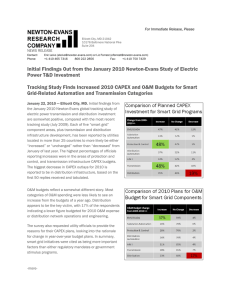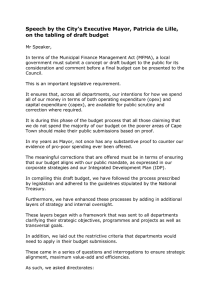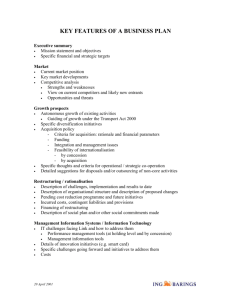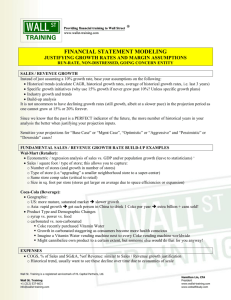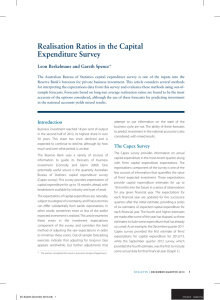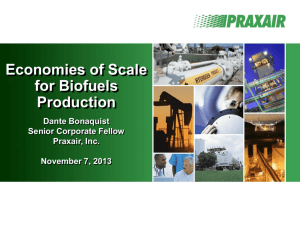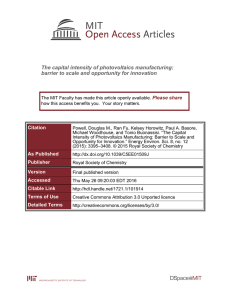Measuring Business Investment Box A
advertisement
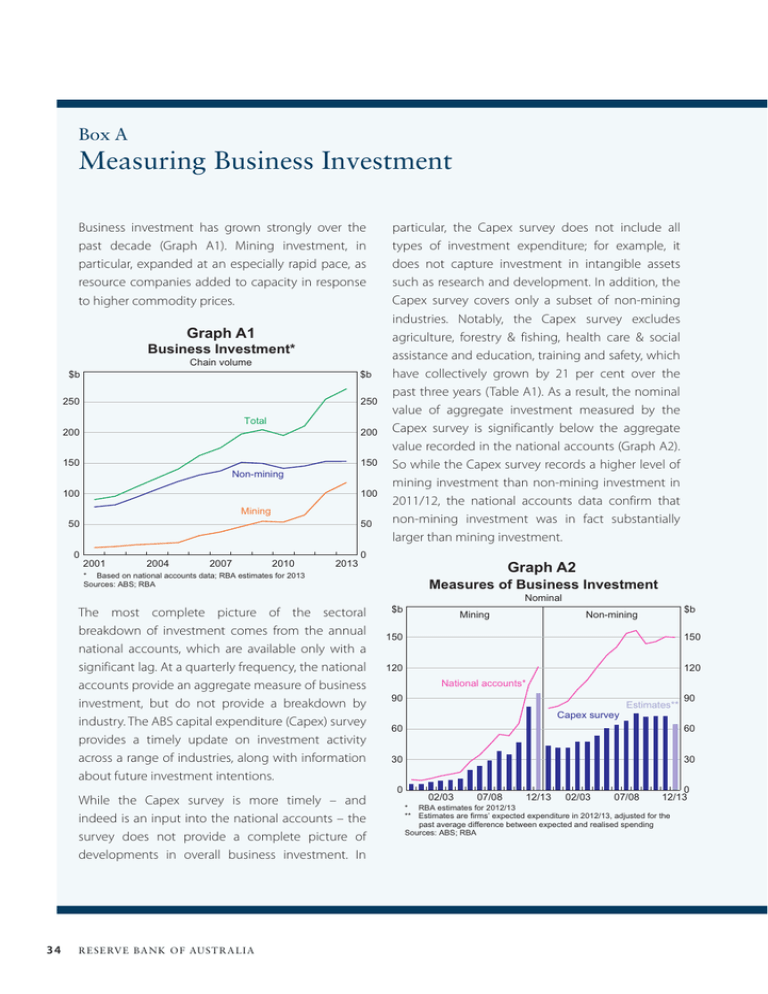
Box A Measuring Business Investment Business investment has grown strongly over the past decade (Graph A1). Mining investment, in particular, expanded at an especially rapid pace, as resource companies added to capacity in response to higher commodity prices. Graph A1 Business Investment* Chain volume $b $b 250 250 Total 200 150 200 150 Non-mining 100 100 Mining 50 0 50 2001 2004 2007 2010 2013 particular, the Capex survey does not include all types of investment expenditure; for example, it does not capture investment in intangible assets such as research and development. In addition, the Capex survey covers only a subset of non-mining industries. Notably, the Capex survey excludes agriculture, forestry & fishing, health care & social assistance and education, training and safety, which have collectively grown by 21 per cent over the past three years (Table A1). As a result, the nominal value of aggregate investment measured by the Capex survey is significantly below the aggregate value recorded in the national accounts (Graph A2). So while the Capex survey records a higher level of mining investment than non-mining investment in 2011/12, the national accounts data confirm that non-mining investment was in fact substantially larger than mining investment. 0 Graph A2 * Based on national accounts data; RBA estimates for 2013 Sources: ABS; RBA The most complete picture of the sectoral breakdown of investment comes from the annual national accounts, which are available only with a significant lag. At a quarterly frequency, the national accounts provide an aggregate measure of business investment, but do not provide a breakdown by industry. The ABS capital expenditure (Capex) survey provides a timely update on investment activity across a range of industries, along with information about future investment intentions. While the Capex survey is more timely – and indeed is an input into the national accounts – the survey does not provide a complete picture of developments in overall business investment. In 34 R es erv e Ba nk of Aus t r a l i a Measures of Business Investment Nominal $b Mining $b Non-mining 150 150 120 120 National accounts* 90 Capex survey Estimates** 90 60 60 30 30 0 02/03 07/08 12/13 02/03 07/08 0 12/13 * RBA estimates for 2012/13 ** Estimates are firms’ expected expenditure in 2012/13, adjusted for the past average difference between expected and realised spending Sources: ABS; RBA Consequently, while the Capex survey is helpful in assessing the state of mining and non-mining investment, it is important to supplement these data with analysis and information from a wide variety of other sources – such as the Bank’s business liaison program, project-based databases, building approvals data and business surveys – in order to obtain a full picture of investment activity underway in the economy. R Table A1: Investment by Industry 2011/12, per cent Share of total 3-year-ended growth Mining Industry 41.6 87.7 Non-mining 58.4 –4.1 – Included in Capex 48.4 –8.0 10.7 –14.4 Manufacturing and construction Electricity, gas, water & waste services 4.1 –8.3 Wholesale and retail trade 5.3 –2.7 Transport, postal & warehousing 6.6 –6.0 Information, media & telecommunications 4.0 –23.9 11.0 –1.5 6.9 –1.2 Business services (finance and rental) (a) Other services – Not included in Capex 10.0 21.1 Agriculture, forestry & fishing 6.6 29.2 Education, training and safety 1.8 72.1 Health care & social assistance 1.6 –24.4 (a)The Capex survey excludes the superannuation funds sub-component of this series which is included here Source: ABS STATE ME N T O N MO N E TARY P O L ICY | au g u s t 2 0 1 3 35
